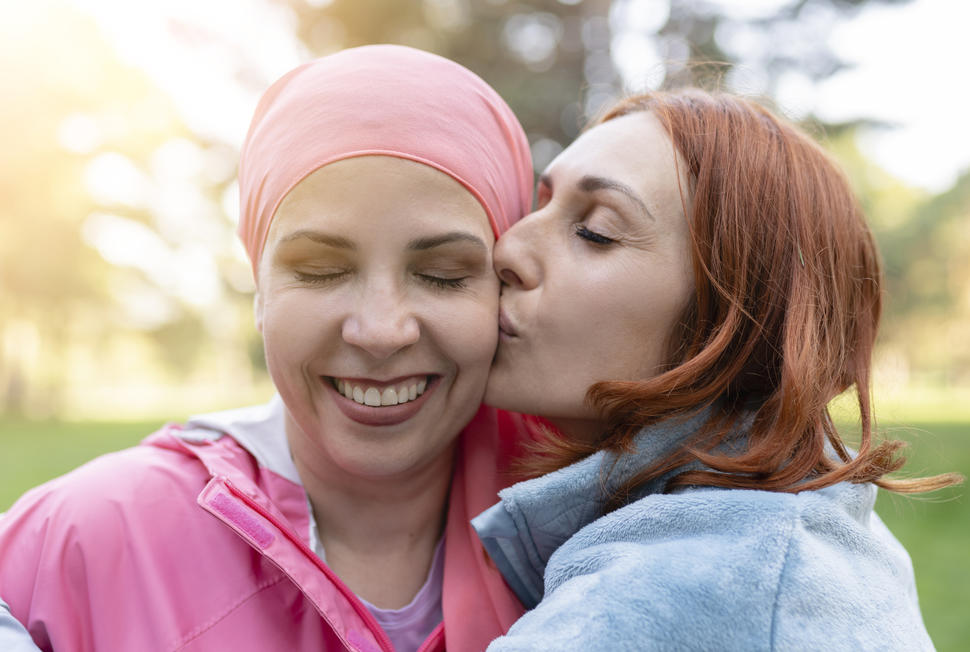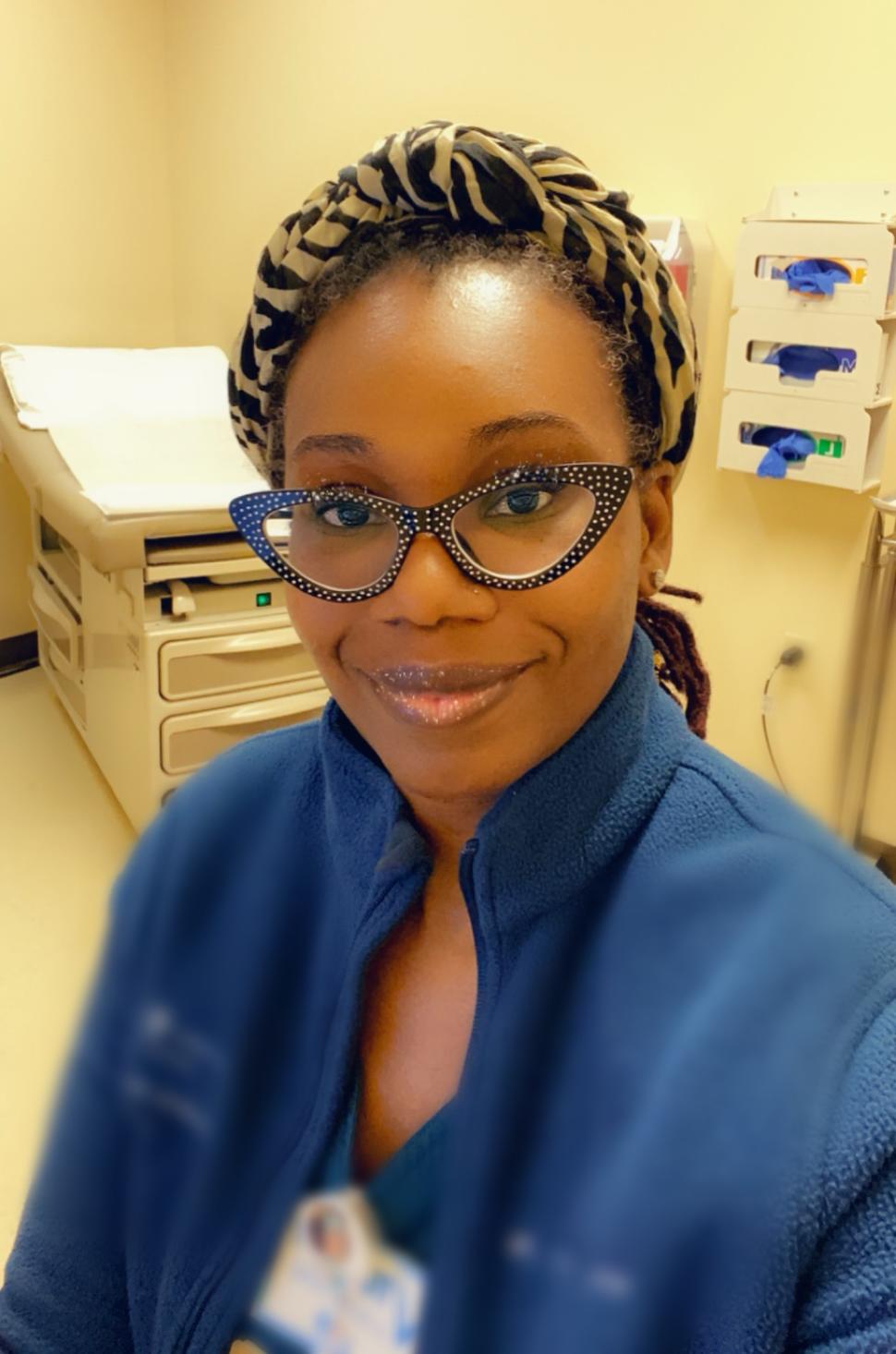LGBTQ+ Voices: Listening to Sexual and Gender Minority People Affected by Cancer
, by Edward Winstead
This story has an accompanying Q&A with Dr. Gwendolyn Quinn, Ph.D., of the New York University Perlmutter Cancer Center, on some of the challenges faced by LGBTQ+ people with cancer and ways to address them.
After surgery for breast cancer 2 years ago, Asiyah Franklin, who identifies as queer, asked her health care team when she could become sexually active again.
“They had given me guidance about returning to activities such as driving after my double mastectomy,” she said. “I wanted to know when I could resume having sex.”
But Franklin, who is a nurse, did not get the medical advice she sought. Instead, she had “an awkward conversation” with a doctor and did not receive an answer to her question.
The exchange was one of several that left Franklin feeling “unheard and unseen while undergoing treatment for cancer,” she said.
Franklin’s experience highlights the challenges that sexual and gender minority (SGM) people with cancer may face. SGM is an umbrella term that includes lesbian, gay, bisexual, transgender, queer, intersex, and asexual individuals, as well as people who are neither heterosexual nor cisgender (LGBTQIA+).
Although research on cancer and SGM people has been limited, this group reports less satisfaction with cancer care and is more likely to have experienced discrimination in health care settings than non-SGM people.
The rates of certain cancers, such as anal, breast, and cervical cancer, may differ between SGM subgroups and non-SGM people, though researchers lack the data to definitively answer this question. Some risk factors for cancer, such as tobacco use and infection with cancer-causing viruses, appear to be more common in SGM subgroups than non-SGM groups.
In addition, transgender and gender-diverse individuals are less likely to be up to date on their recommended cancer screening tests than non-SGM people. The reasons, researchers say, are complex and may include a lack of health care providers trained to care for SGM people.
There is also evidence that SGM people are less likely to seek care for possible symptoms of cancer than non-SGM people, and, as a result, their cancers may be diagnosed at a more advanced stage.
“SGM people experience disparities across all aspects of cancer and cancer care,” said Matthew Schabath, Ph.D., of the Moffitt Cancer Center, who studies health disparities among SGM populations. “But we do not yet understand the true breadth and depth of these disparities.”
The good news, Dr. Schabath continued, is that the number of researchers interested in studying these disparities has been growing.
A national conference on SGM people and cancer
Many of these investigators attended the first national conference dedicated to research on cancer among SGM people, in October 2023. With nearly 200 attendees, including experienced researchers and young investigators, the gathering marked a milestone for the field.
“The conference was invigorating,” said Ulrike Boehmer, Ph.D., of Boston University School of Public Health, who has studied SGM populations and cancer for several decades.
“Cancer among SGM people is an important and neglected topic,” Dr. Boehmer continued. “But more researchers have embraced the field recently, and they were able to connect and exchange ideas at the conference.”
In addition to scientists, the NCI-sponsored meeting drew health care providers, patient advocates, SGM cancer survivors, and representatives of agencies that fund cancer research. New York University's Perlmutter Cancer Center hosted the event.
The participants presented new research, discussed priorities for future studies, and shared lessons learned about securing research funding. A panel of SGM people affected by cancer added patient perspectives.
Working with SGM communities to reduce cancer health disparities
The meeting had two aims: to develop an overarching agenda for future research and to create opportunities for young investigators to connect with potential mentors.
Both goals are critical for developing the knowledge needed to guide decisions about cancer care for SGM people, according to Shine Chang, Ph.D., of the University of Texas MD Anderson Cancer Center, who attended the conference.
There is considerable diversity among and within SGM subgroups, Dr. Chang noted. It’s clear, she added, that researchers need to work closely with SGM communities to identify cancer-related disparities affecting these communities and ways to address their needs.
“Voices from SGM communities can help shape how researchers conduct studies,” Dr. Chang said. Getting buy-in from these communities before developing strategies to reduce health disparities is critical, she added.
LGBTQ+ identification has become more common
Identifying as LGBTQ+ has become more common. In the United States, 7.6% of the adult population identifies as lesbian, gay, bisexual, transgender, or something other than heterosexual, according to a new Gallup poll. In 2017, 4.5% of the population identified as LGBTQ+.
The poll also found that LGBTQ+ identification was more common in younger generations. More than 22% of adult members of Generation Z—defined as those born between 1997 and 2012—identified as LGBTQ+. The rate was nearly 10% among millennials (born 1981–1996) and less than 5% among older generations.
“If you’re a health care professional working with adolescents and young adults with cancer, chances are very good that you’re going to work with a patient who is LGBTQ+,” said Charles Kamen, Ph.D., of the University of Rochester, who studies health equity.
It’s important, Dr. Kamen continued, for health care professionals to be aware of the challenges that LGBTQ+ adolescents and young adults with cancer may face. Some of these young people might not have disclosed their sexual orientations to their parents, for example.
“A cancer diagnosis can exacerbate the already difficult issues young LGBTQ+ people are dealing with,” Dr. Kamen said.
Who identifies as a sexual and gender minority person?
Part of the meeting focused on a challenge for the field: the lack of data on SGM people and cancer.
Although national cancer registries collect information on variables such as age, race, and ethnicity, they do not collect data on sexual orientation and gender identity. Cancer clinical trials also do not routinely collect that data.
So, for most of the people with cancer in the United States, “we don’t know who identifies as a sexual and gender minority person,” explained Sarah Jackson, Ph.D., of NCI’s Division of Cancer Epidemiology and Genetics, who studies cancer in transgender and gender-diverse individuals.
The lack of sexual orientation and gender identity data in national cancer registries limits the kinds of studies that are possible, she continued. Researchers cannot, for instance, compare national data on SGM and non-SGM groups to see how they might differ in cancer incidence, survival, or response to treatment.
Without these data, researchers have often relied on health surveys. The OUT National Cancer Survey and the Behavioral Risk Factor Surveillance System, for instance, capture sexual orientation and gender identity data as well as health data. And some large health studies, including NIH’s All of Us study, do as well.
“We need to include the collection of these data in everything we do—every single survey, every cohort study, and every clinical trial,” Dr. Jackson said.
For the last few years, NCI has been supporting studies designed to learn how best to collect sexual orientation and gender identity information. Investigators involved in this work at various cancer centers shared their findings at the conference.
There is also support in the cancer registry community for collecting sexual orientation and gender identity information in the future, according to Kathy Cronin, Ph.D., of NCI’s Surveillance Research Program.
“There is a recognition that this information is important to collect if we are to better understand cancer risks and inequities in outcomes,” Dr. Cronin said.
Recognizing the different identities in SGM people with cancer
Knowing who identifies as an SGM person with cancer would help researchers address another challenge: Understanding how a person’s experience with cancer is shaped not only by their SGM status but also by other factors, including their racial, ethnic, and socioeconomic backgrounds.
“We all have different parts of our identities, such as living in a rural area, being a non-English speaker, or having a disability,” said Gwendolyn Quinn, Ph.D., a health psychologist at New York University Perlmutter Cancer Center.
But researchers have only just begun to understand how the different parts of a person’s life may work together to affect their cancer risk and access to quality health care. Participants at the conference said this research should be a priority.
“The field is moving toward trying to better understand the intersection of people’s different identities, including their SGM status,” Dr. Quinn said.
Training cancer researchers to work with SGM communities
As research on SGM people and cancer expands, additional investigators will be needed.
To help expand the workforce, Dr. Chang and others have held a series of workshops to prepare early-career researchers to work with SGM populations. The NCI-supported program, SGM Cancer CARE, aims to train 150 people over 5 years.
Newly trained investigators could help address important gaps in the research on SGM people and cancer, noted Nelson Sanchez, M.D., an emergency medicine physician at Memorial Sloan Kettering Cancer Center, who co-leads the program.
“For instance, we have limited information on what SGM people deal with during the cancer treatment process and what their concerns might be,” Dr. Sanchez said.
Asiyah Franklin is helping with this work. She has joined a community advisory board for NCI-supported researchers and has shared her experiences undergoing treatment for cancer. “We want health care providers to have a better understanding of who we are,” Franklin said.
Franklin has also helped researchers develop surveys for cancer survivors who identify as queer. The survey is intended to expand knowledge about the health care experiences of this understudied group of cancer survivors.
For Dr. Schabath, reducing the cancer burden among SGM people starts with listening.
“Our message to the health care community is to spend time listening to the concerns of sexual and gender minorities,” he said. “And if you use the wrong term or pronoun, that’s okay—just apologize and move on.”
He added, “By working in partnership with SGM communities, we will advance this research.

